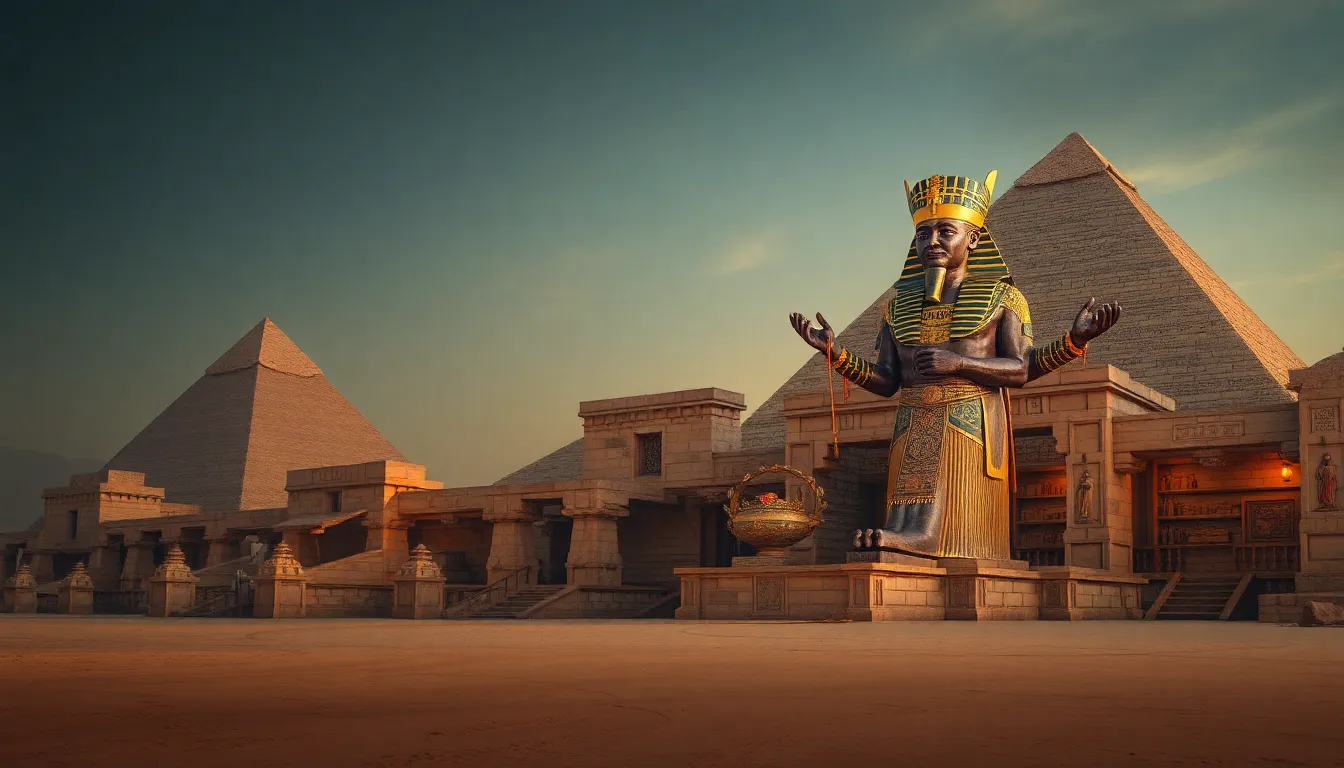The Importance of Divine Kingship in Egyptian Identity and Culture
I. Introduction
Divine kingship, a central tenet in Ancient Egyptian culture, refers to the belief that the pharaoh was not only a political leader but also a divine figure, embodying the will of the gods on Earth. This concept was fundamental to the identity of the Egyptian state and its people, providing a framework through which they understood their world and their place within it.
The significance of divine kingship extended beyond mere governance; it encompassed religious, social, and cultural dimensions that shaped Ancient Egyptian society. This article aims to explore the multifaceted role of divine kingship, its historical evolution, and its lasting impact on Egyptian identity.
II. Historical Context of Divine Kingship
The origins of divine kingship can be traced back to the Early Dynastic Period (c. 3100-2686 BCE), where the unification of Upper and Lower Egypt under the first pharaoh, Narmer, set the precedent for future rulers. This initial establishment laid the groundwork for a system where the pharaoh was seen as a mediator between the gods and the people.
Over time, the concept of divine kingship evolved through the various periods of Egyptian history:
- Old Kingdom (c. 2686-2181 BCE): The pharaoh was viewed as a living god, with monumental architecture such as pyramids being constructed as testament to their divine status.
- Middle Kingdom (c. 2055-1650 BCE): A shift occurred where the pharaoh’s role became more pastoral, emphasizing their responsibilities to the people alongside their divine attributes.
- New Kingdom (c. 1550-1070 BCE): The pharaohs were seen as both military leaders and gods, with powerful figures like Ramses II exemplifying this duality.
Key pharaohs such as Osiris, Akhenaten, and Tutankhamun not only represented divine kingship but also influenced its evolution through their unique reigns and beliefs.
III. The Role of the Pharaoh as a Divine Figure
The pharaoh’s divine attributes encompassed several responsibilities, including maintaining order, overseeing agricultural cycles, and ensuring prosperity. Their divine status was reinforced through various rituals and ceremonies, such as the Sed festival, which celebrated the pharaoh’s continued vitality and reaffirmed their connection to the gods.
The relationship between the pharaoh and the gods was symbiotic. The pharaoh was seen as the earthly embodiment of the god Horus, while in death, they were associated with Osiris, reinforcing the cycle of life, death, and rebirth that was central to Egyptian belief.
IV. Symbolism and Iconography of Divine Kingship
The symbolism surrounding divine kingship is rich and varied, with imagery in art and architecture playing a crucial role. The construction of monumental structures such as pyramids and temples served both functional and symbolic purposes, acting as gateways to the divine and as eternal resting places for the pharaohs.
Iconic symbols associated with the pharaoh included:
- Crook and Flail: Representing kingship and the pharaoh’s role as a shepherd to his people.
- Ankh: Symbolizing life and immortality, often depicted in the hands of the pharaoh.
- Uraeus: The cobra symbolizing sovereignty and divine authority, often seen on the pharaoh’s crown.
These symbols were frequently represented in hieroglyphics and literature, serving as a reminder of the pharaoh’s divine role and the responsibilities that came with it.
V. Divine Kingship and Egyptian Religion
Divine kingship was deeply integrated into the religious practices of Ancient Egypt. The pharaoh was seen as the high priest of every temple, responsible for performing rituals that appeased the gods and ensured the stability of the cosmos.
One of the key concepts associated with divine kingship was maat, representing cosmic order, truth, and justice. The pharaoh’s role in maintaining maat was paramount, as it ensured harmony within the universe and society.
The interactions between the pharaoh and the priesthood were complex, with the high priests serving as intermediaries between the gods and the people, further reinforcing the divine authority of the pharaoh.
VI. Impact on Society and Governance
The influence of the pharaoh extended beyond religion; they played a crucial role in law and order, often seen as the source of justice. Their decrees were considered divine commands, and the legal system was closely tied to religious beliefs.
The socio-political structure under divine kingship was hierarchical, with the pharaoh at the top, followed by nobles, priests, and commoners. This structure created a sense of unity among the Egyptian people, as they were all seen as subjects of a divine ruler.
VII. Legacy of Divine Kingship in Contemporary Egyptian Identity
The historical memory of divine kingship continues to impact modern Egypt. The reverence for pharaonic heritage is evident in the national identity, with many Egyptians taking pride in their ancient civilization and its achievements.
Today, the influence of divine kingship can be seen in various aspects of contemporary culture, including art, literature, and national symbolism, reinforcing the connection to Egypt’s rich historical past.
VIII. Conclusion
In summary, divine kingship was a cornerstone of Ancient Egyptian culture, intertwining governance, religion, and societal structure. The enduring significance of divine kingship is evident in the continued reverence for pharaonic heritage and its influence on modern Egyptian identity.
As we reflect on the importance of divine kingship, it becomes clear that further exploration of this topic is essential for a deeper understanding of not only Ancient Egyptian culture but also its lasting impact on contemporary society.




